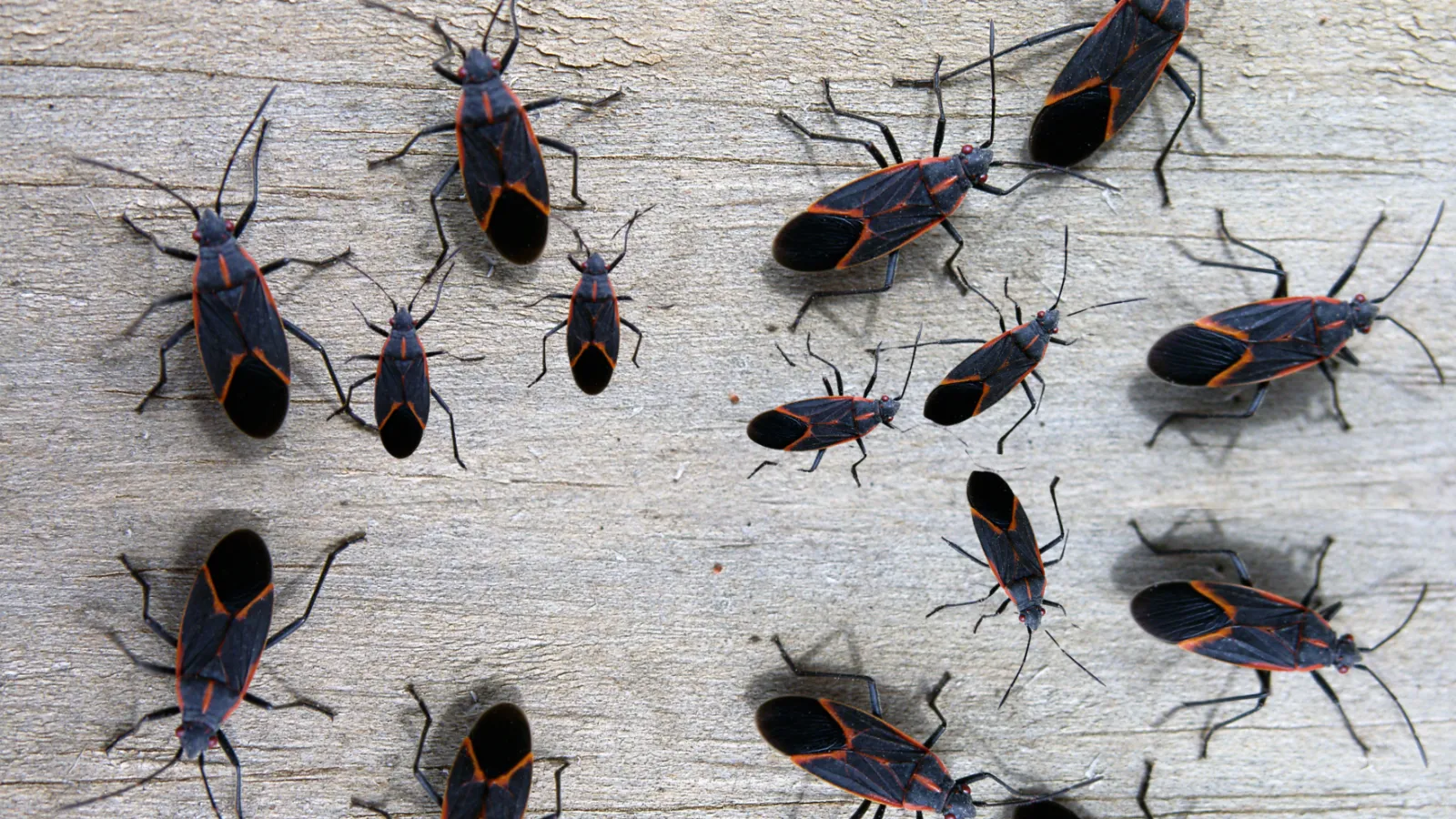
Boxelder Bugs
Latin Name: Boisea trivittata
Boxelder bugs are a common nuisance pest known for their distinctive black bodies with orange or red markings along their wings and thorax. They are about 12-14 mm in length and are primarily found in North America, where they feed on boxelder trees, as well as other maple and ash species. While they are harmless to humans and pets, their presence in large numbers can be irritating, especially when they invade homes.
When Boxelder Bugs Enter Homes:
Boxelder bugs are most likely to enter you Poquoson, VA home during the fall as they seek shelter to survive the winter. This phenomenon is known as overwintering behavior, where insects find warm, dry places to hibernate until the weather warms up in spring.
Typically, you may notice boxelder bugs around:
- Late September to early November (depending on your region's climate).
- Sunny sides of homes where they bask in the warmth.
- Window sills, door frames, and foundation cracks where they gain entry.
Why They Enter Homes:
Boxelder bugs invade homes for protection from cold temperatures. They are drawn to the warmth of structures and may enter through:
- Small Openings: Cracks in walls, gaps around windows and doors, or holes in siding.
- Warmth: They are attracted to south- and west-facing walls, which retain heat from the sun.
- Lack of Natural Shelter: When their preferred outdoor overwintering spots (e.g., tree bark or under debris) are insufficient, they move to nearby buildings.
Problems They Cause:
Although boxelder bugs do not bite or cause structural damage, their presence indoors can lead to:
- Staining: Their excrement can leave reddish-brown marks on walls, curtains, and furniture.
- Odor: When crushed, they emit an unpleasant smell.
- Nuisance: Large numbers can gather, creating a visual and psychological annoyance.
Prevention Tips:
To reduce the chances of boxelder bugs entering your home:
- Seal Entry Points: Caulk cracks and crevices, and repair damaged screens and weather stripping.
- Reduce Attractants: Remove boxelder trees near your home if feasible or consider pest treatments for them.
- Exterior Treatments: Use insecticides on walls and entry points as a last resort, preferably with professional help.
By addressing these points, you can keep boxelder bugs at bay and avoid the headaches of an indoor infestation.
Similar Pests: Stink Bugs
